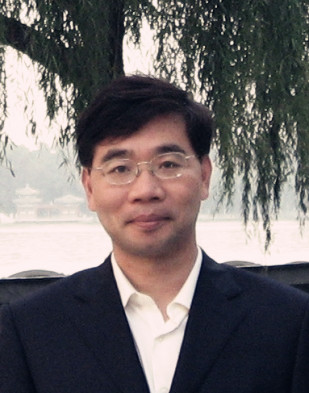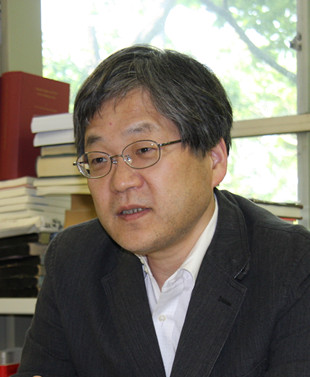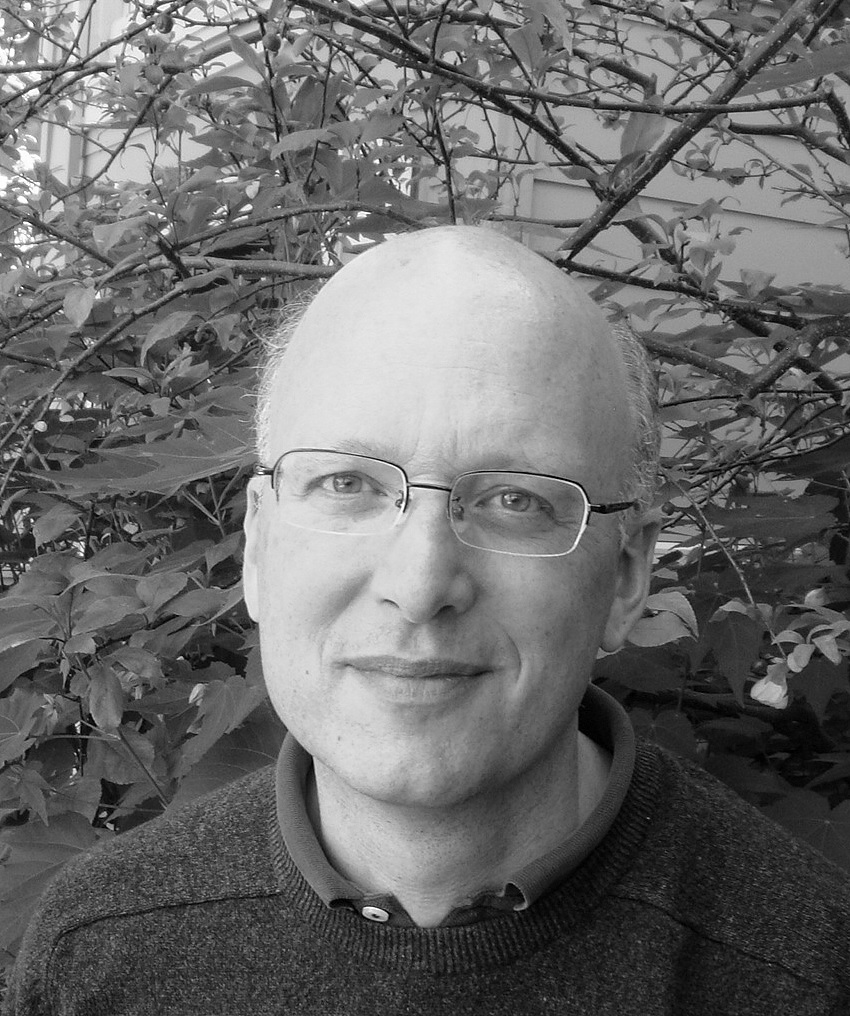复旦中华文明国际研修班第一期
“佛教与中国文化”
招生启事
2013年8月12日至26日,复旦大学中华文明国际研究中心(ICSCC)将举办为期两周的“复旦中华文明国际研修班”第一期,主题为“佛教与中国文化”,地点设在上海 。诚邀青年学人参与。研修班课程邀请以下五位国际学者(以姓氏罗马字顺位为序),讲授五门课程:(主讲人及课程介绍详见英文部分)
1. Stephen Bokenkamp 柏夷(美国亚利桑那州立大学教授): 吾夏之夷教: 二至七世纪道教对佛教的回应;
2. Jinhua Chen 陈金华 (加拿大大不列颠哥伦比亚大学亚洲研究所教授): 佛法之流变:佛教在中古亚洲跨文化作用的新视野;
3. Seishi Karashima 辛嶋静志 (日本创价大学国际佛教研究中心教授): 大乘经典之文献学剖析;
4. John Kieschnick 柯嘉豪 ( 美国斯坦福大学宗教系教授): 物中有佛,佛中有物:佛教与物质文化;
5. Barend J. ter Haar 田海(英国牛津大学教授): 中华帝国晚期的地方宗教文化;
所有课程均以 英、汉双语讲授。
除五门课程之外,我们将组织以下四项活动:
1. 由中国学者发表的10场关于佛教与中国宗教的演讲系列。本系列也可当作一个独立的课程来修读。(演讲日程表请点击)
2. 佛教与中国宗教国际研究生研讨会,计划于2013年8月12-16日在复旦大学举行。(日程安排点击下载)
3.一个关于中国宗教中神圣空间的国际研讨会(“神圣的空间&空间的神圣——中古中国宗教中空间因素的构成与展开”);计划2013年8月16-17日于复旦大学举行(研讨会信息另行公布)。
4.数次名胜参访活动(主要是上海及周边地区的佛寺与道观),参加者可自愿报名,交通以及门票等费用则需自理。
此次课程是非学位性的,不作为转学分课程。复旦将为参加者颁发证书,证明所修课程。每位参加者至少选修两门课程,至多为四门(旁听不限)。欢迎佛教与中国宗教或相关专业的研究生以及对佛教与中国宗教有基本了解的高年级(3年级或4年级)本科生的参与。入学申请务必于2013年5月31日前提交至summerprogramfudan@yahoo.com.
申请需包括(1) 申请表(点击下载),(2) 申请者的个人简历、(3) 以及一封推荐信(可由推荐人直接电邮于我们)。
课程费用: 1,000美元(包括学费以及研修期间的住宿费和管理费用)。往来的机票或车票费用以及开课期间的交通费用由参加者自理。
奖学金:参加者可以申请全额奖学金(1,000美元)和半额奖学金(500美元),用以全免或半免学费,住宿费及管理费。
定员: 35名
日程表:(点击下载)8月7日更新
2013 ICSCC-FUDAN UNIVERSITY SUMMER PROGRAM
ON BUDDHISM AND CHINESE RELIGIONS
The International Center for Studies of Chinese Civilization (ICSCC), Fudan University in Shanghai, China cordially invites applications for a two-week summer program in Buddhism and Chinese Religions (August 12-26, 2013) in Shanghai, China. Through this program, ICSCC has invited five international scholars to open five seminars on specific topics. These instructors include (alphabetically):
1. Stephen Bokenkamp (Professor, Arizona State University, USA): This Foreign Religion of Ours: Daoist Responses to Buddhism in the Second to Sixth Centuries
2. Jinhua Chen (Professor, Department of Asian Studies, the University of British Columbia, Canada): The Dharma that Flowed: New Perspectives on Buddhism’s Cross-cultural Roles in Medieval Asia
3. Seishi Karashima (Professor, the International Research Institute for Advanced Buddhology, Soka University, Japan): A Philological Approach to Māhāyana Scriptures
4. John Kieschnick (Professor, Department of Religions;Stanford University,USA): The Religious Life of Things: Buddhism and Material Culture
5. Barend J.ter Haar(Professor, University of Oxford; UK): Local Religious Culture in Late Imperial China;
All of the lectures are conducted bilingually (English and Chinese). In addition to these five seminars, this summer program also sponsors the following four more projects.
1. A Series of ten lectures Delivered by Chinese scholars on Buddhism and Chinese Religions (this series itself can also be attended as a separate course); (click here to download)
2. International Graduate Students Conference on Buddhism and Chinese Religions (August 12-16, 2013; at Fudan University);(schedule click here to download)
3. An international conference on sacred space in Chinese religions, titled “sacred Spaceand Spatial Sacredness: The Composition and Development of the Spatial Factors in Medieval Chinese Religions, to be held at Fudan University, August 16-17, 2013 (conference information to be announced separately);
4. Occasional visits to renowned local historical sites (especially Buddhist and Daoist temples in Shanghai and the neighboring areas). Transportation fees and entrance tickets will be on the participants.
This is not a degree program, but Fudan University will issue a certificate to each participant. A student is required to take at least three of these seminars (including the lecture series) offered by this program, and allowed to register for up to four seminars (there is, however, no limit on the number of seminars to be audited). Graduate students specializing in any Buddhist tradition or Chinese Religions, or advanced undergraduate students (3rd or 4th year) with some basic knowledge in Buddhism and Chinese Religions, are encouraged to apply. Applications and inquiries shall be directed to summerprogramfudan@yahoo.com.Please send your application before May 31, 2013.
Each application shall include (1) an application form (click here to download), (2) an updated curricula vitae, and (3) a reference letter (to be sent by email by the referee directly).
Program expenses:US$1,000, which includes tuition fees, housing expenses, and administration costs in China. Students are expected to cover their own air-tickets and ground transportation during their stays in China.
Scholarship:Full (at the value of US$1,000) and half (US$500) scholarships are available to help students cover the tuition and accommodation fees wholly or partly. Consideration will be given to both academic excellence and financial need.
Enrolment Limit:35
Program Schedule: (download here)updated on August 7th
Profiles of Instructors
1. Stephen R. Bokenkamp 柏夷

Stephen R. Bokenkamp is professor in the School of International Letters and Cultures and the Department of Religious Studies at Arizona State University. He also held short-term teaching positions at Stanford and other universities. He began his study of Daoism in 1978 under the direction of Professors Michel Strickmann 司马虚 and Edward H. Schafer 石爱华 and received his PhD from the University of California, Berkeley. He specializes in the study of Daoism, Dao-Buddhist interactions, and medieval Chinese literature. He has written most extensively on Six Dynasties religious developments and Tang-period poetics. In addition to numerous journal article and book chapters, he is the author of two books, Early Daoist Scriptures (1999) and Ancestors and Anxiety: The Birth of Rebirth in China (2009). He is a recipient of a number of distinguished grants and fellowships, including, most recently, the Guggenheim Foundation Fellowship.
2.Jinhua Chen 陈金华

Jinhua Chen is professor of East Asian Buddhism at the University of British Columbia, where he also served as the Canada Research Chair in East Asian Buddhism (2001-2011). He also held short-term teaching positions at the University of Virginia, the University of Tokyo and Stanford University. He has worked on Chinese Buddhism from the fifth to ninth century, and Japanese Buddhism (primarily Tendai and Shingon) during the Nara and Heian periods. In addition to over forty journal articles and book chapters, he also authored Making and Remaking History (Tokyo, 1999), Monks and Monarchs, Kinship and Kingship (Kyoto, 2002), Philosopher, Practitioner, Politician: The Many Lives of Fazang (643-712) (Leiden, 2007), Legend and Legitimation: The Formation of Tendai Esoteric Buddhism (Brussels, 2009), and Crossfire: Shingon-Tendai strife as seen in two twelfth-century polemics (Tokyo, 2010). He has received grants and fellowships from a variety of foundations and organzaition, including Social Sciences and Humanities Research Council of Canada (SSHRC), Alexander von Humboldt Foundation, and most recently the National Humanities Center.
3. SEISHI KARASHIMA 辛嶋静志

SEISHI KARASHIMA is Professor of Sino-Indian Buddhist Philology at The International Research Institute for Advanced Buddhology, Soka University, Tokyo. 1976–1994 studied Indology, Buddhist Studies and Sinology at the University of Tokyo (B.A. and M.A.), Cambridge University, Beijing University (Ph.D.) and at Freiburg University. Areas of publication and research: philological studies of early Buddhist Sanskrit Texts and early Chinese Buddhist translations. His publications include: An Annotated Japanese Translation of the Chinese Version of Dirghâgama, 6 vols, Tokyo 1995–2005 (coauthor); An Annotated Japanese Translation of the Pali Vessantara-jataka, Tokyo 1988; The Study of the Chinese Versions of the Saddharmapuṇḍarīkasūtra –– in the light of the Sanskrit and Tibetan Versions, Tokyo 1992; A Study of the Underlying Language of the Chinese Dirghâgama–––Focusing on an Analysis of the Transliterations, Tokyo 1994 (in Japanese); A Glossary of Dharmaraksa's Translation of the Lotus Sutra, Tokyo 1998 (Bibliotheca Philologica et Philosophica Buddhica I); A Glossary of Kumarajiva's Translation of the Lotus Sutra, Tokyo 2001 (Bibliotheca Philologica et Philosophica Buddhica IV); A Glossary of Lokakṣema’s Translation of the Aṣṭasāhasrikā Prajñāpāramitā (Bibliotheca Philologica et Philosophica Buddhica XI), Tokyo 2010; A Critical Edition of Lokakṣema’s Translation of the Aṣṭasāhasrikā Prajñāpāramitā (Bibliotheca Philologica et Philosophica Buddhica XII), Tokyo 2011; Die Abhisamācārikā Dharmāḥ : Verhaltensregeln für buddhistische Mönche derMahāsāṃghika-Lokottaravādins, herausgegeben, mit der chinesischen Parallelversion verglichen, übersetzt und kommentiert, unter Mitwirkung von Oskar von Hinüber, Tokyo 2012 (Bibliotheca Philologica et Philosophica Buddhica XIII), 3 vols.
4.John Kieschnick 柯嘉豪

John Kieschnick received his PhD from Stanford, after which he completed a postdoc at the Center for Chinese Studies in Berkeley before taking up a position at the Institute of History and Philology 历史语言研究所 at Academia Sinica 中央研究院 in Taiwan where he eventually became an Associate Research Fellow 副研究员. He subsequently taught in the Department of Theology and Religious Studies at the University of Bristol as a Senior Lecturer and then Reader, in 2011 assuming a position as Professor in the Department of Chinese Culture at Hong Kong Polytechnic University 香港理工大学. In 2012 he accepted his current position as the Robert H.N. Ho Family Foundation Professor of Buddhist Studies in the Department of Religious Studies at Stanford. His area of specialization is the cultural history of Chinese Buddhism. He has published The Eminent Monk: Buddhist Ideals in Medieval Chinese Hagiography (Honolulu: University of Hawaii Press, 1997), a study of the Biographies of Eminent Monks 高僧传 tradition, and the Impact of Buddhism on Chinese Material Culture (Princeton: Princeton University Press, 2003), as well as a number of book chapters and articles. He is currently working on a book-length study of Buddhist historiography in China.
5.Barend J. ter Haar 田海

Barend J. ter Haar teaches Chinese studies at the University of Oxford, with a strong focus on cultural and religious history. Although first of all a social and cultural historian, the religious dimension is so central to Chinese traditional life that much of his research up to now has dealt with religious phenomena. In addition, he has worked extensively on issues of ethnic identity, violence and fear, and social organization. An important concern of his is to demonstrate that traditional culture and cultural patterns are still relevant today, as becomes visible for instance in the role of exorcist violence in political contexts throughout the twentieth century. His first two books were The White Lotus Teachings in Chinese Religious History (Leiden: E.J. Brill, 1992) and The Ritual and Mythology of the Chinese Triads: Creating an Identity (Leiden: E.J. Brill, 1998). They have been translated into Chinese and should be published this or next year by Shangwu yinshuguan in Beijing. My third book is entitledTelling Stories: Witchcraft and Scapegoating in Chinese History (Leiden: Brill, 2006). It deals with rumours and persecution, but also with the Chinese origins of the famous fairy tale of Red Riding Hood. He has just finished his book on the lay Buddhist group called the Non-Action Teachings (late 16th century to the present), in which he presents a social history of this movement based on sources which include internal materials that have not been used before or have been read in very different ways from before.
Course Descriptions
1. This Foreign Religion of Ours: Daoist Responses to Buddhism in the Second to Sixth Centuries 吾夏之夷教: 二至七世纪道教对佛教的回应
In this seminar, Pro. Bokenkamp will first give a brief overview of the formation of the Daoist religion and cover the sources available to the modern scholar for the study of Daoism. Following this brief introduction, participants will read the earliest mentions of the Buddhist religion in Daoist texts, as well as few comparable allusions to the foreign religion in secular sources. Then, for two-thirds of the course we will cover the remarkable Lingbao wholesale absorption of Buddhist elements into Daoism. These will include Daoist ideas of samsara and rebirth, the Buddhist-inspired cosmology of the Lingbao scriptures, the "translation" of Daoist texts from pseudo-Sanskrit celestial graphs, and the construction of new moral emphases derived from Buddhist models. Participants will be given secondary and primary sources to prepare for each session. Instruction will consist in equal parts of lecture and reading exercise, during which participants will be able to practice reading difficult Daoist sources. There will be an emphasis on the ability to distinguish the ways items of Buddhist terminology and doctrine are reconfigured in Lingbao sources.
2.The Dharma that Flowed: New Perspectives on Buddhism’s Cross-cultural Roles in Medieval Asia 佛法之流变:佛教在中古亚洲跨文化作用的新视野
This seminar explores some basic logics underlying the interactions between different Buddhist traditions originating from South, Central and East Asia. It challenges the plausibility of the conventional strategy of that seeks to interpret how a “derivative”/“peripheral” Buddhist tradition was related to a more “original”/“central” form of Buddhism in a “unidirectional” and rather mechanical way that explains developments on the “margins” in terms of influences from the “center.” It aims to address the impact projected from the “peripheral” to the “central” places of practice. Further, It highlights the fluidity of Buddhist center(s) and the possibility that a single site’s status as central or marginal might change. Rather than investigating Chinese, Vietnamese, Korean, and Japanese traditions as though they were separate entities, this framework, further, encourages scholars to study East Asian Buddhism as a whole.
3. A Philological Approach to Māhāyana Scriptures 大乘经典之文献学剖析
Each Mahāyāna scripture must have its own complex background and history. Probably, many of the early ones were originally transmitted in Middle Indic (languages of people) and later “translated” gradually into (Buddhist) Sanskrit (language of intellectuals, comparable to Latin in Christianity). In order to draw nearer to the original features of early Mahāyāna scriptures, we should, therefore, pay much attention to newly discovered Gāndhārīmanuscript fragments of Mahāyāna scriptures, dating even back to the first century, and early Chinese translations, made between the second and the fourth century, whose underlying Indian texts were transmitted probably in Middle Indic. In addition to written evidence, we should also consult the results of various researches conducted on archaeological and art historical materials. By considering all such materials together, we may be able to attain new perspectives on early Mahāyāna scriptures.
4. The Religious Life of Things: Buddhism and Material Culture 物中有佛,佛中有物:佛教与物质文化
Buddhist doctrine provides perhaps the strongest and most systematic critique of the material world of any religion. Yet at the same time, Buddhists have produced some of the world’s most elaborate, exquisite art—art that has shaped the material culture of most of Asia. This nine-part, intensive course will examine just Buddhist art, but the whole array of Buddhist objects employed for their symbolic, ritual or practical function (robes, relics and alms bowls) rather than for aesthetic enjoyment. Throughout, we will highlight the problems created by the inevitable prevalence of artifacts in a religion that has always had a profoundly ambivalent attitude toward the material world. Each session will consist of a combination of lecture and discussion, according to the following schedule:
1)The importance of things
2)Tensions between religion and material culture, Buddhism and the material world
3)The Power of Icons
4) Aniconism and Iconoclasm
5)Books
6)Buildings
7)Relics
8)Clothing and food
9)The Big Picture
5. Local Religious Culture in Late Imperial China 中华帝国晚期的地方宗教文化
This seminar consists in the following nine lectures
1)Studying local religious culture;
2)Labelling of religious culture (White Lotus Teachings and Gelaohui, shamans and mediums, and so forth);
3) Religious culture at the centre of social organization;
4) Charitable activities and religious life;
5)Spirit writing;
6)New religious groups, especially the Non-Action Teachings or Great Vehicle teachings of the Lower Yangzi region;
7)Triads;
8)Rumours and collective fear;
9)The cult of Lord Guan.
<

